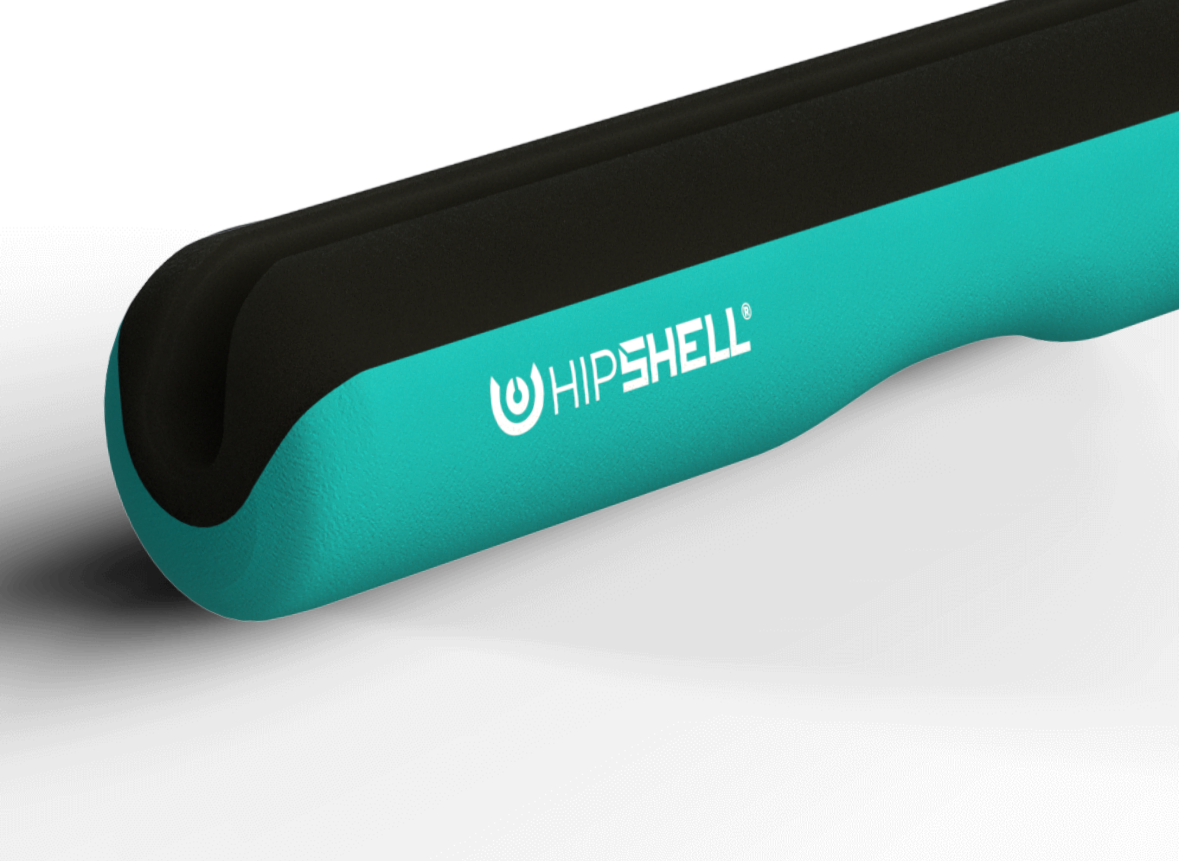Currently, yoga mats and squat barbell pads are used in an attempt to protect the hips bones and pelvis while performing hip thrust (and glute bridge). However, these items have been designed and manufactured for a different purpose or application and not for the specific requirements that the hip thrust exercise demands in terms of protection and comfort.
Unlike squats where the barbell sits on top of several muscles providing a sort of cushion protection, when you perform the exercise hip thrust or glute bridge, the barbell is positioned between the lower belly and the pubic bone where there is minimal muscle tissue and therefore no protection against the barbell and the training weight.
If you feel pain or discomfort while exercising, your ability to engage the glutes and focus on the correct technique is highly interfered, negatively influencing your progress and results.
MATERIAL AND DESING
Every person has different hips bone and pelvic structure. The optimal material of a barbell pad should be flexible and soft enough to perfectly mold/shape into your unique anatomy.
On the other hand, the material must be strong, resistant, durable and with great pressure-absorbent capabilities to provide a pain-free and comfortable performance when exercising.
When it comes to pad design and ergonomics, not only comfort but functionality must be considered. The pad should be stable enough to be kept in place with minimum movement or rotation while exercising. The shape should allow for an optimal load displacement and pressure relief.
THICKNESS AND DIAMETER
The thickness of the pad is also an important factor to consider. Depending on the material with which the pad is made of, more or less thickness will be necessary to properly alleviate the pressure of the barbell. Usually, the more thickness, the better. However, thickness determines the pad´s diameter. If too large, the pad will generate a lot of uncomfortable pressure at the tight and belly when the hips are flexed (at the bottom, beginning of the movement) and, the large diameter won’t allow for a full range of motion, limiting hip flexion.
FOAM MATERIAL AND DURABILITY
Current yoga and barbell pads are made of cheap foam or foam covered in nylon. Although they fit into the requirement of being soft and flexible enough to suit every person bone structure, the material fail to protect the hips and pelvis with moderate to heavy loads, due to its poor capability to absorb pressure, which further decreases with usage. On top of that, foam doesn’t last long and deteriorates and crack quite fast.
HIPSHELL® BARBELL PAD
HIPSHELL® is the only barbell pad designed specifically for the hip thrust exercise. Its conception considered all the above aspects to bring the first ever pain-free hip thrust barbell pad.
Design/shape, ergonomics, material durability, material pressure-absorbing capabilities, material density, pad thickness, pad diameter, friction and rotating forces, have been meticulously analysed, evaluated and tested to create the best barbell pad for hip thrust in the market.
What is best, HIPSHELL® not only solves the issues when hip thrusting moderate to heavy loads. It also “guides” you to keep optimal technique.
The foundation of hip thrust is hip extension. Spine movement should be limited and minimised while hip flexo-extension occurs. Pelvis should remain in a neutral position, and maybe slightly posteriorly tilted at the top of the movement when hips are fully extended.
A common mistake is excessively tilting the pelvis anteriorly at the bottom of the exercises (hip flexed). If that happens, HIPSHELL® pad might rotates slightly forward.
Another mistake might be to move the barbell away from the optimal position (between the two prominent pelvis bones (anterior superior iliac crests) and the pubic bone) towards the femur (making the exercises less challenging) in an attempt to lockout or reach full hip extension. In that case, HIPSHELL® may slightly rotates forward. The barbell should be held firmly in placed throughout the entire range of motion with minimal pelvis motion. HIPSHELL® rotation is a sign of excessive pelvis motion or an attempt to move the barbell away from its optimal position.
When executing with proper form, HIPSHELL® perfectly keeps the ideal position with no rotation ensuring the best performance possible.


Leave a comment
This site is protected by reCAPTCHA and the Google Privacy Policy and Terms of Service apply.